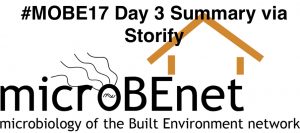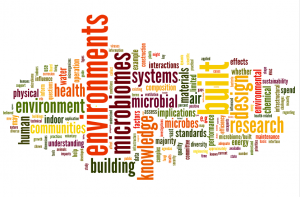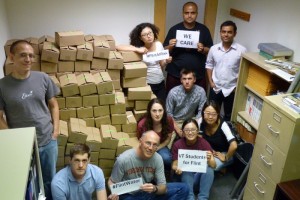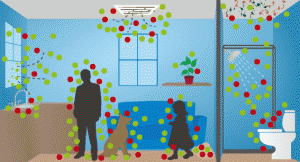So Indoor Air 2018 is fast approaching (June 22-27th) and there are a large number of MoBE-relevant talks on the menu. The preliminary program for the entire conference can be found here. Paula Olsiewski from the Sloan Foundation sent us a list this morning of the talks relevant to the Sloan funded microbiology of the …
Here’s the Storify from Day 3 of the Microbiology of the Built Environment meeting in Washington D.C. A more detailed summary to follow later. [View the story “#MOBE17 Day 3 Summary via Storify” on Storify]
So one of my projects for the last few months has been to try to create a collection of every peer-reviewed publication that resulted from the Alfred P. Sloan Foundation program of the Microbiology of the Built Environment. The program has been running for over 10 years and has funded over 100 grants. To generate …
The NAS report on Microbiomes of the Built Environment is getting some reasonably broad reach. For example it was picked up by the American Industrial Hygiene Association. See: Report Suggests Research Agenda for Indoor Microbiology, Human Health, and Buildings
On April 11 there was a meeting in Washington DC that was part of an effort from a new study being conducted by the National Academies of Science, Medicine, and Engineering on “Microbiomes of the Built Environment”. Videos and slides from the meeting have now been posted. I have compiled them below. In addition, I …
This seems like an incredibly worthy cause: Source: FlintWaterStudy Research Fundraiser by Siddhartha Roy – GoFundMe In addition it is directly connected to the mission of microBEnet in that this is a fundraiser for the work of Marc Edwards, He is a professor at Virginia Tech and one of the heroes of the Flint Water …
2013-5-19MBPF Source: Sources of airborne microorganisms in the built environment | Microbiome | Full Text Really nice new review paper by Aaron Prissin and Linsey Marr. It covers research on sources of airborne microbes including Humans Pets Plants Plumbing HVACs Water damage Dust Outdoor air Really thorough with tons of references and discussion of the …
Shared post by Rachel Adams & James Meadow As intrepid scientists working to understand the interactions between humans, buildings, and the microbes we share, a recently published review paper caught our attention. The piece, Recent Advances in the Microbiology of the Built Environment, by Konya and Scott, set out to synthesize what has been learned …
Sequencing of PCR-amplified marker regions (e.g. 16S, ITS) for characterization of sample microbial ecology is a widely-used tool in Microbiology of the Built Environmenta (MoBE) investigations. Due to the large amount of data produced by these methods, sequences are typically clustered into operational taxonomic units (OTUs) based on sequence similarity to simplify downstream processing. However, …





